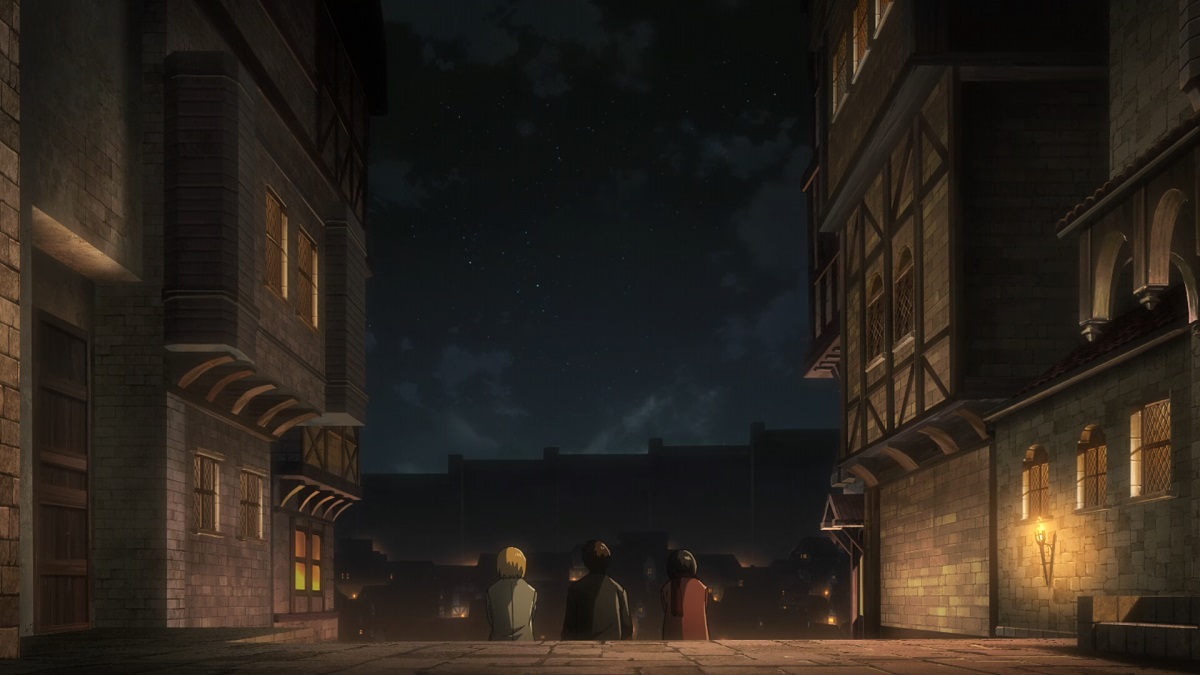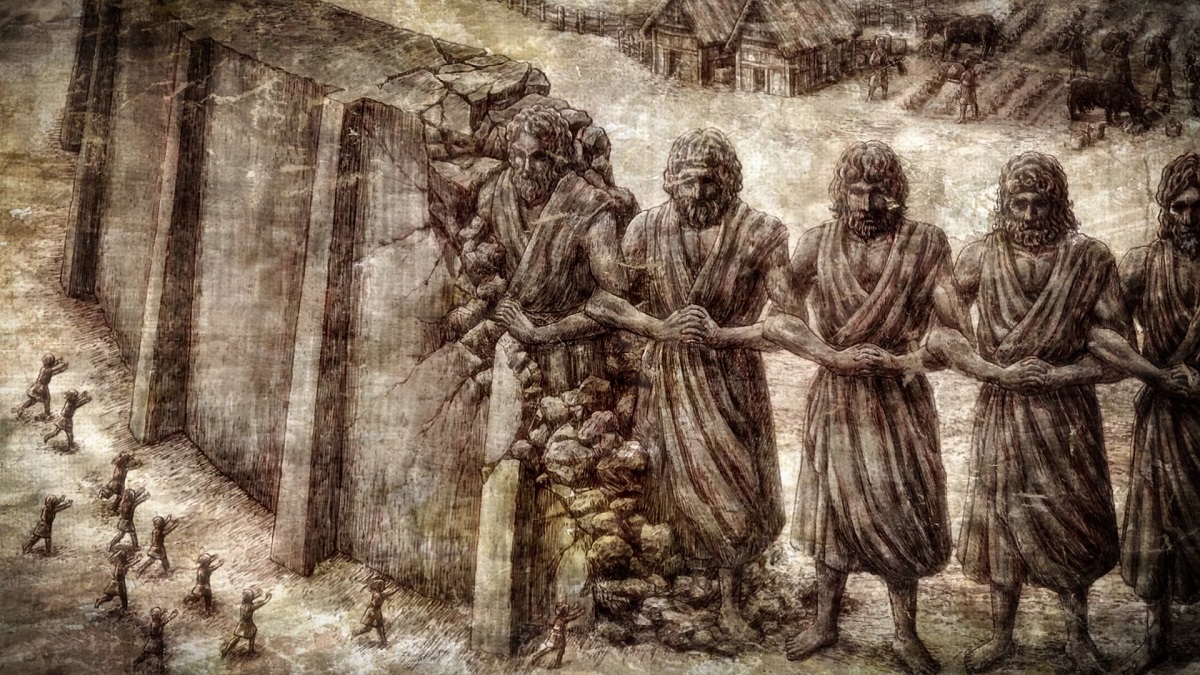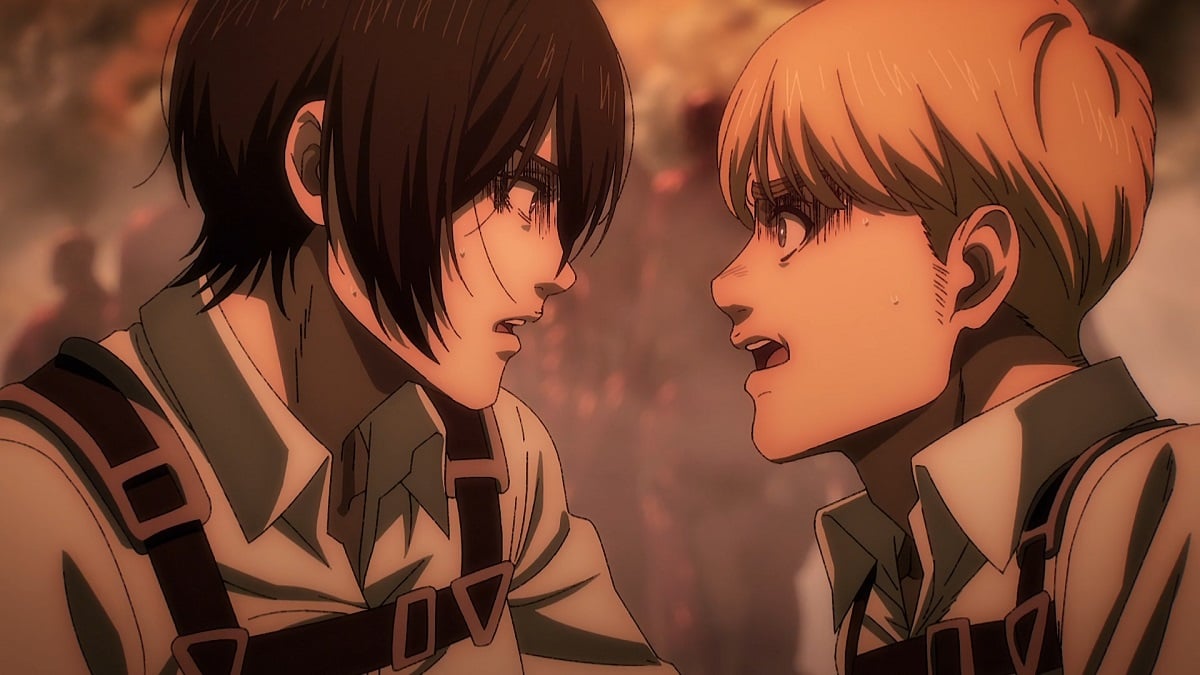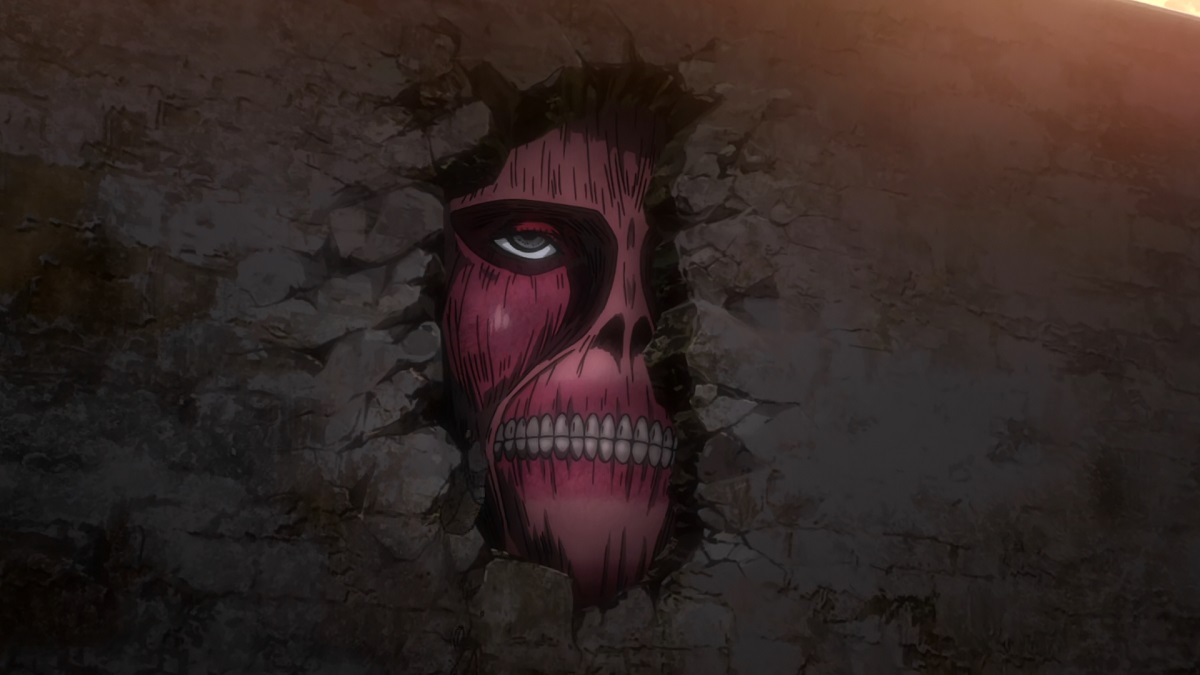Warning: The following article contains spoilers for the final season of Attack on Titan.
Eren Yeager has unleashed the full might of Paradis against the world in the ongoing final season of Attack on Titan, but where did that army of Colossal Titans come from and why did King Fritz build the three walls in the first place?
The fact that the three walls of Maria, Rose, and Sina are made of giant 50-meter titans is a mystery the show unveiled in the final moments of season one, but it would be quite a few years until we learned the truth behind why they were created and the real purpose they’d serve in the conflicts to come.
Attack on Titan led fans to believe that the walls were created by the fleeing humans against the Titan onslaught, but we’ve since learned the world outside lives in peace and harmony beyond the shores of Paradis, and the Titans that posed all the horror and devastation to the islanders were actually their compatriots sent to exile by Marley.
It all goes back to the Great Titan War, a period of civil unrest in the Eldian Empire. When the 145th king inherited the powers of the Founding Titan after his predecessor’s 13 years were up, Fritz stood against the many hundred years of titan conflict and retreated to the island of Paradis, where his people would live in false peace for more than 100 years.
King Fritz and the founding of Paradis

The fact that most people who live inside the Walls are ignorant about how these enormous barriers came to be is also the work of the king through the power of the omnipotent Founding Titan. Fritz deleted the collective memory of his people in the hope that they would forget about the world outside and accept an alternate history where the Titans suddenly appeared out of nowhere and compelled humanity to retreat behind the Walls.
Fritz believed that the world would know no peace as long as he and the rest of the Nine Titans roamed free, so he bound his powers with an oath forsaking war, took as many of his people as he could, and sailed for the island of Paradis. Even the world outside received a fair share of that brainwashing, thinking that a Marleyan hero named Helos managed to gain the upper hand and defeat the king when in truth it was actually the monarch himself who came up with the idea and conspired with the Tybur family (the inheritors of the Warhammer Titan) to bring an end to the Eldian Empire.
What the kings and queens of Eldia refused to understand, though, was that the human spirit is ever-curious and that one day, some folks would have the courage to venture beyond the Walls and uncover the truth about their mysterious past.
Are the walls made of Colossal Titans?

The king was not a fool by any stretch of the imagination, all too aware of the fact that even if they sought peace, the world would not leave them be. That’s why he erected the three walls using the power of the Titans. The walls themselves aren’t made of stone, but rather hundreds of thousands of Colossal Titans who have used the titan power known as “hardening” to form these gigantic structures.
Hardening is the power Annie Leonhart used at the end of season one to form an impenetrable shield around her body. It is also what gives Reiner his armor. As it stands, then, the walls are also not strictly made of stone, but the same substance that gives titans their “hardening” abilities.
This hardening doesn’t necessarily make the walls indestructible. Reiner and Bertolt have both managed to destroy chunks of it in their titan form. Even Annie broke a piece of it during her escape attempt in Stohess District, which revealed to the Survey Corps for the first time that the central government was hiding the secrets of the Titans from the populace.
As for what these secrets are, Fritz didn’t erect the walls to be safe from the pure titans that Marley would eventually send their way. Indeed, the king wanted the walls to serve as some form of deterrence against attack, warning the world that were they to break his peace, he would unleash the Colossal Titan army and flatten the face of the Earth, a threat which came to be dubbed “The Rumbling.”
Why did Eren break down the walls?

Of course, our protagonists eventually learned that the king wasn’t going to make good on his word even in the case of an attack. The oath that Fritz swore bound all the kings and queens that inherited his powers, stopping them from using the power of the Founding Titan to enact violence or vengeance.
That’s where Eren Yeager comes in. Since inheriting the power of the Founder from his father, who stole it from Frieda Reiss of the royal family, Eren has been waiting for a chance to destroy the Titans with the king’s enormous powers. Not being of royal blood essentially took away all his utility for four seasons, until he came into contact with Zeke Yeager, his half-brother who had royal blood through his mother Dina Fritz.
By then, of course, Eren’s ambitions had changed from killing the titans — in truth, his compatriots — to using the power to initiate the Rumbling. The Survey Corps planned to use the Rumbling as a last resort and only in a brief show of strength, but Eren has now unleashed all the Colossal Titans within the walls with the intention of destroying civilization at large.
The Wall Titans and the nuclear analogy

It’s no secret that creator Hajime Isayama intended the Colossal Titan to serve as a metaphor for nuclear weapons. That becomes apparent in the way he depicts Bertolt and Armin’s transformation into titan form, usually followed by a mushroom cloud and terrifying levels of destruction. The fact that the King of the Walls wanted to use his army of Colossal Titans as a deterrent and created them for this very purpose further reinforces this allegory, hearkening back to the “deterrence theory” that gained prominence in the Cold War era.
Eren Yeager, in his maddening rage, decides to release this devastating power unto the world, caring little for the consequences it might bring. The remaining Eldians and Marleyans form an alliance to stop the protagonist-turned-mass murderer from finishing this genocide, thus assuring that the cycle of violence will continue.

